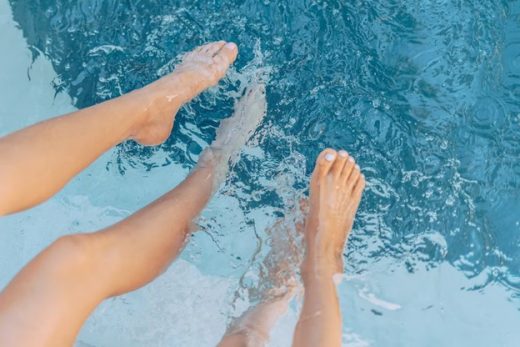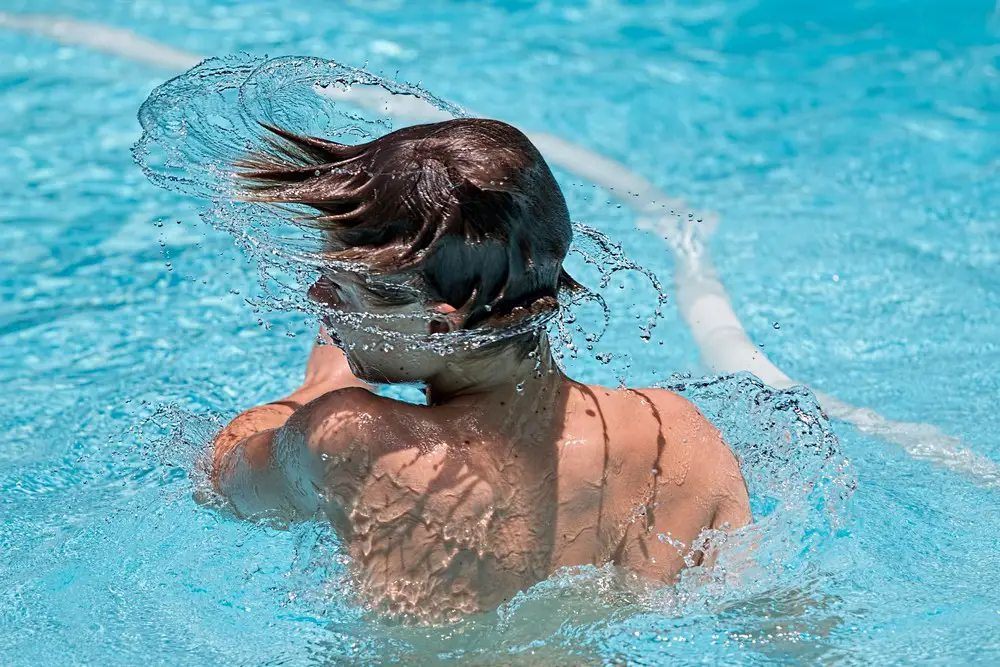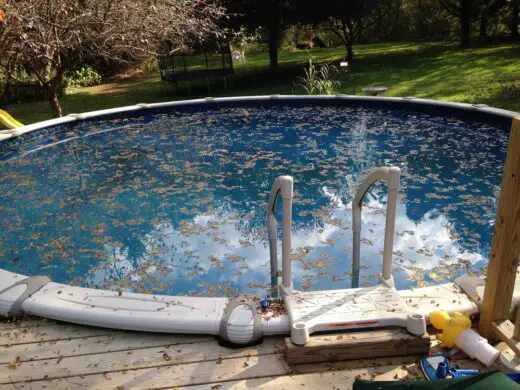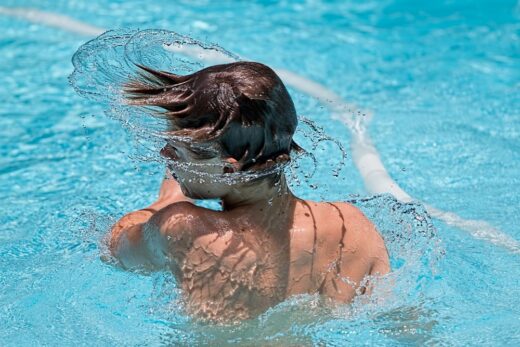How to clean a dirty above-ground pool liner guide, Home swimming design tips, Property water balance advice
How to Clean a Dirty Above-ground Pool Liner?
16 Oct 2022
Are you starting to see stains on your pool liner? Cleaning the pool liner has several advantages. It prolongs its lifespan and allows people to bathe in a clean pool. It is relatively easy to clean the element of an above-ground swimming pool. However, you must follow specific rules to avoid damaging it:
Why Clean an Above-ground Pool Liner?
The liner is one of the significant elements of a swimming pool. It helps keep the water clean. Thus, it prolongs the life of your swimming pool. You should know that the average life of a liner is 10 to 15 years. If it has stains, it may change the color of the water and, therefore, plays an important role not only in the longevity of the pool but also in its aesthetics.
So be sure to maintain a good water balance and act quickly when you notice stains. It is also essential to avoid soiling the pool with tanning oil. This will leave stubborn marks on the edge and bottom of the pool.
The liner is a coating that performs two functions. On the one hand, it guarantees the water tightness of the swimming pool, and on the other hand, it ensures its finish. To enjoy a beautiful appearance, you must take care of this element regularly and adequately. Indeed, not all stains require the use of the same method since they do not all have the exact origin.
Different Types of Stains on a Liner
To clean the liner, one must first understand the origin of the stain. Indeed, each dirt is cleaned differently and follows a unique process. To maintain your coating, I advise you first to identify the nature of the stains. Indeed, these can be metallic or biological.
- Metal stains come from the corrosion of pipes and equipment, such as access ramps and faucets. They cause rusty, red, or brown colored spots.
- Biological stains are caused by organic waste, such as leaves, algae, and pollen. This waste decomposes and leaves black marks on the liner.
Steps to Clean an Above-Ground Pool Liner
After identifying the origin of the stains, it’s time to proceed with the cleaning based on the color of the stain. Here are the ones that are the most recurrent and that you will undoubtedly encounter.
Greenish Brown Stains
In general, the greenish-brown color comes from the decomposition of organic matter, such as leaves, and the presence of algae or fungi that may be caused by rust from pool accessories. To get rid of this, perform a shock chlorination treatment. Then, adjust the pH of the water between 7.2 and 7.4.
Don’t forget to put the filtration on continuously for 24 hours. This treatment will make it possible to increase the fineness of filtration and eliminate the algae in suspension. Then, I advise you to brush the walls and vacuum the residue.
To avoid this type of problem, get a liner protector mat to protect it from rust and tear from the pool ladder. You can also use an opaque cover that protects the water from dirt.
Dark Blue-green or Black Stains
In most cases, the dark blue-green or black color indicates the presence of berries or leaves. In or around the water, this, unfortunately, leaves traces. If your above-ground pool is not located near trees, it may be due to copper. You should therefore check the piping to see if there is any corrosion.
The treatment of this kind of stain can last a week. Start by acidifying the pool by reducing the pH to 6. Aftershock chlorination puts a sequestrant of metal ions in a curative dosage. Add more dosage in the following days, depending on the hardness of the stain. Backwash the filter when you notice that it has completely disappeared, and raise the pH to 7.2 or 7.6.
White or Gray Stains
When the stain is rough to the touch, it is tartar. To clean the liner, in this case, acidify the pool or use a particular anti-tartar product. If the stain persists, you have no choice but to empty the pool to descale it.
To deal with this problem and prevent scale from returning to the walls or bottom of the pond, you must analyze the water regularly. I recommend that you adjust the pH to 7.2 and 7.6. In addition, treating the water at least three times a year with a suitable anti-limestone is essential.
Things Needed to Clean the Pool Liner
You can use products that are simple, economical, and easy to find to clean your pool liner:
Household Alcohol
Using a microfiber cloth soaked in alcohol, rub the water line and rinse with a damp sponge.
Baking Soda and White Vinegar
Very often used for cleaning, baking soda is an indispensable ally. You can mix it with white vinegar and then scrub the colored line and liner with this solution. All you have to do is rinse.
Soda
More potent than baking soda, soda crystals are a very effective degreaser. In 1 liter of warm water, put a tablespoon of soda crystals and let them dissolve. Then, using a sponge impregnated with this solution, rub the stains gently until they disappear. Then rinse using a damp sponge.
Clay Stone
An easy and economical way. The clay stone is an excellent solution for spot or water line cleaning. Impregnate a sponge with the biodegradable stone and rub gently. This operation will leave a grainy deposit that will need to be removed. After removing the grains with a microfiber cloth or a damp sponge, you will find a clean and impeccable liner.
Shock Treatment
The shock treatment is the most effective, but it requires some precautions. In a bucket of water, dilute a small amount of chlorine and pour it into the pool. Attention, it is forbidden to swim for at least 48 hours.
On the other hand, the use of shock chlorination must be occasional. I recommend that you only use it in extreme cases. Often repeated, it can prematurely wear out the pool liner.
Drain the Pool
If, despite your efforts, the stains persist, drain the pool. You can use aggressive products such as limescale removers and bleach at this stage. These will unhook the limescale plaques on the liner and help you eliminate stains. Don’t forget to vacuum before filling your pool.
Proper liner maintenance is essential to keep a pool in good condition for as long as possible. To do this, you must adopt good practices: Regular cleaning, especially before winterizing the pool. Protect the water from debris, leaves, and dirt, especially at night and in winter. Maintain a balanced pH of around 7.4 and 7.6 to avoid the proliferation of algae.
Clean a dirty above-ground pool liner Conclusion
There are different methods for cleaning a liner. You should choose the most suitable one depending on the color of the spots. Whichever method you choose, gently rub the liner in a circular motion. This way, you will avoid weakening it. By following the procedures listed above, your pool will find its splendor, and you can fully enjoy your swimming sessions.
Comments on this How to Clean a Dirty Above-ground Pool Liner? article are welcome.
Swimming Pools Articles
Swimming Pool Posts
How To Keep Your Pool Clean and Well-maintained

How to ensure your family swimming pool is child-friendly
All you need to know about natural swimming pools
Prepare Your Home Pool For Summer
Building Articles
Residential Architecture
Comments / photos for the How to Clean a Dirty Above-ground Pool Liner? page welcome







